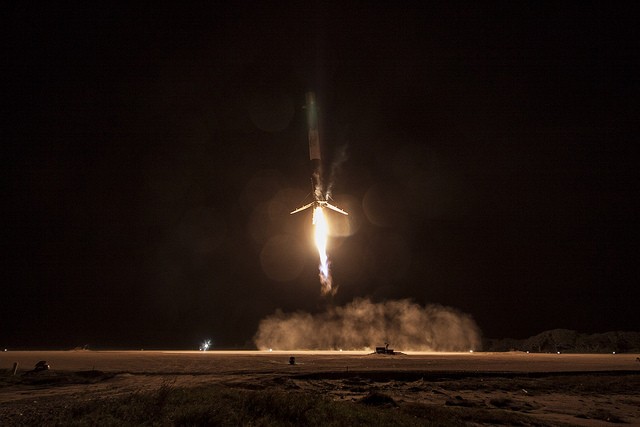SpaceX's Falcon 9 rocket just successfully landed its first stage back on Earth following a December 21 launch of 11 small satellites in lower Earth orbit but now, SpaceX CEO and founder Elon Musk has apparently revealed on a post online Thursday how this breakthrough reusable rocket booster is ready to be launched again.
Musk posted a photo of the Falcon 9 on his social media accounts on Twitter and Instagram, a few hours before New Year, with details about the Falcon 9 rocket that it sustained no damage on the booster where it will be set to fire again soon when needed.
However, it is still unclear when the Falcon 9 rocket will be utilized again for a mission since it is now stored in a hangar in Cape Canaveral Air Force Station in Florida but Musk is confident of SpaceX's capability of a quick turnaround, where another space mission can be quickly accommodated by the new reusable rocket.
The booster can be refurbished and reused that can slash expensive space launches since rockets traditionally burn up in the atmosphere and fall back to Earth. Falcon 9 however, only took US $60 million to build and $200,000 for its fuel supply that can be revolutionary for the future of spaceflight.
For the next launch, the first successful Falcon 9 rocket that landed back to Earth will not be utilized according to Musk during a media conference, stating that this last rocket that launched 11 satellites could never be used again for a mission, adding that it was "unique" since it was the first first stage booster that returned back to Earth.
However, Falcon 9 is not the first rocket to be able to land vertically after launching into space, where another private space company, owned by Amazon CEO Jeff Bezos called Blue Origin, successfully landed its own reusable rocket in late November during a test flight.
Now, SpaceX is also getting ahead of the space race after this 15 story high booster successfully landed vertically after its deployment of ORBCOMM communications satellites. This also marks the first successful SpaceX launch after its last one that failed and exploded shortly after liftoff last June 2015.
Musk also revealed the new tweaks for Falcon 9 that enabled this successful and safe vertical landing. Liquid oxygen fuel is now 40 degrees colder compared to past test flights and failed landing attempts where kerosene fuel is now chilled for 20 degrees instead of 70.



























